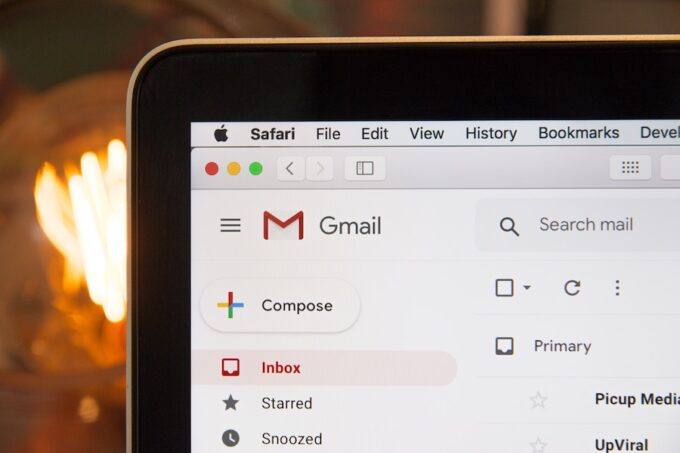What is email cleaning?
If you use email marketing to improve your brand’s awareness, chances are you may have trouble with the engagement of your marketing campaign. Email list cleaning eliminates inactive subscribers from your email list, so you can only promote those who want to receive your emails. Because email list maintenance is an essential element of tailoring your marketing, you should clean up your list at least twice a year.
How to Tell When Your Email List Requires an Update

Source: coolmomtech.com
Your analytics, especially open and click rates, will be the first indication that your list is scrub-worthy. If you have noticed a drop in these throughout your previous few email campaigns, you may have a large number of unsubscribed contacts and disengaged individuals.
For this reason, it’s prudent to check your unsubscribe rate and spam complaints regularly. Check the Yespo article to know how to do it the right way.
Unfortunately, if your subscribers do not engage with your emails, they aren’t likely to turn into consumers. Worse, if they have had enough of receiving your emails and have marked you as spam, they may be affecting your deliverability to those on your list who want to hear from you.
Tactics to Employ When Cleaning Your Email List
Given how vital email cleaning is for your brand, it’s of utmost importance that you use the right strategies for the task. Here are some of the best tactics that can assist you in cleaning your email list to improve engagement in your marketing campaigns.
Make Inquiries

Source: bigframe.net
One of the most significant setbacks for email marketing campaigns is low engagement. If the vast majority of your subscribers aren’t interacting with your emails, it’s difficult to tell whether they don’t care about your content, aren’t compelled to engage with them, or aren’t receiving them at all. A great way to jumpstart engagement is by asking questions. Seek to find out why most of your subscribers aren’t clicking on your emails by conducting polls, requesting feedback, and allowing preference settings. Doing this will enable you to filter out unresponsive contacts and improve the services of those who are interested.
Simplify the Opt-Out Process
Given that all organizations want to reap desirable results from their marketing campaigns, keeping as many subscribers as possible may seem like the way to go. Due to this, some brands make it hard for people to unsubscribe from their email campaigns. However, doing this can be rather detrimental to your marketing operations. The reason behind this is the fact that uninterested subscribers who are unable to opt-out will mark your emails as spam. Consequently, this will immensely damage your reputation and reduce the credibility of your brand. Ergo, it’s wiser to make it easy for subscribers to jump-ship than risk your brand’s reputation by getting multiple spam strikes.
Consider a Re-engagement Email Campaign

Source: globital.ae
While it may be discouraging to have low engagement on your email campaign, it doesn’t necessarily mean that your subscribers aren’t interested in them. In most cases, the content you provide may not be as engaging as you think, or your recipients may just be experiencing email fatigue. Instead of writing them off, you can attempt to lure unresponsive subscribers using re-engagement email campaigns. By providing alternative content that’s more appealing and using incentives such as gifts, exclusive content, and special perks, you can reconnect with your audience. Doing this will improve engagement and lead to better consumer activity.
The Benefits of Cleaning Up Your Email List
When you don’t carefully look after something, it eventually gets unhealthy. The same principle applies to your email list. If you have plenty of unengaged subscribers on your list, most of the time, marketing energy and, most importantly, the income you spend on advertising will be going down the drain. Check emailoversight.com for more details.
It is also vital to remain on top of things since email list churn (subscribers who bounce, report you as spam, or never receive your emails) may consume up to 30 percent of your list each year. Doing this entails cleaning up your email list once or twice a year. This, like many other housekeeping activities, may appear to be a hassle in the short term, but it is well worth the effort in the long run.
Let’s have a look at the benefits of email list cleansing for your marketing strategy:
It Improves click-through and open rates

Source: business2community.com
The click-through and open rates are often a proportion of the total number of emails sent. Here are some industry-specific examples of target click and open rates. While this list provides a starting point, you should monitor your metrics for trends and variations caused by changes in your strategy, as well as other industry and marketing trends. Cleaning your list of unresponsive subscribers boosts the number of individuals who participate against the total number of emails you send.
Reduces Bounce Rate
Bounced emails are just as terrible for your reputation as spam complaints are for your email’s delivery. A bounced email occurs when the recipient’s inbox is full, their address is incorrect, or there is a technical issue. In any case, you’ll want to limit the percentage of these to a minimum to maintain deliverability.
Cost-cutting

Source: pexels.com
There are concrete expenses involved with retaining unengaged subscribers on your list, depending on how you deliver emails. Most email providers charge based on the number of emails you send or the number of subscribers you have. You are squandering marketing expenditures if you are sending emails to individuals who don’t want them. Reducing your list to only those interested will help you increase your total marketing return of investment (ROI).
Effects of Not Cleaning Your Email List
Despite the numerous benefits of cleaning email lists, many organizations still refuse to make it a habit. Doing this can damage your email marketing reputation and cause credibility issues with your brand. Furthermore, contrary to what some marketers may believe, continuously sending emails to unresponsive subscribers can be detrimental to the advertising budget. It would be wiser to purge the uninterested subscribers from your email list and repurpose the funds saved to other marketing strategies.







